Where is your store located?
You can find us at 2718 University Blvd. NE, on University between Menaul and Candelaria.
What are your hours of operation?
Our spring and summer hours are 8-5, Monday through Friday. During the fall and winter, we are also open on Saturdays from 9-1. Please give us a call or check our website to find out when our Saturday hours begin.
Are you offering any sales or promotions?
Please check the "Current rebates" section of our website for an up to date list of our promotions and special offers.
Why should I buy a stove or insert from Mountain West instead of the local big box store?
Big box stores are great if you're buying 2x4's or screws, but when it comes to putting fire in your house, you need our expertise so that you can have the peace of mind that you have the right product installed correctly in your home. And, contrary to what you might believe, you won't pay much more. Our sales staff have years of experience in the hearth business. Don't take a chance with the safety of your home and family.
What's the difference between a fireplace and an insert?
Fireplaces are permanently installed in your home, usually when the home was first built. Inserts are self-contained heating appliances that are installed in the existing opening of your fireplace. If you have a drafty, unused fireplace, an insert will provide you with energy efficient heat from a variety of heat sources, like pellets, wood, or gas.
What are the differences between steel stoves and cast iron stoves?
We offer pellet, wood, and gas stoves in both steel and cast iron. The difference in function between these two materials is really only relevant, however, in gas and wood stoves. Steel heats up faster but cools more quickly. Cast iron takes a little longer to heat up but retains heat longer. This difference can be appreciated most in wood and gas stoves, which rely on radiating heat from hot surfaces. Cast iron typically allows stove manufacturers to create more shapes and styles than steel, which is cut into pieces rather than formed and cast, like cast iron.
Can a stove or insert heat my entire home?
It really depends on a number of factors, including the size and layout of your home, the energy efficiency of the doors and windows, and the insulation in your walls and ceilings. In general, it is best to "size" a stove or insert for the room in which you plan to install it and any adjacent rooms that are open to the room. In this way you can use "zone heating"; that is, you can heat the areas in which you live and save money by keeping other areas of the house cooler.
Do stoves and inserts need to be vented?
Yes. Wood, pellet, and gas stoves are all required to be vented to the outside of the home. Only electric stoves, fireplaces, and inserts do not require venting.
Can pellet stoves be vented horizontally?
Yes. One of the advantages that pellet stoves offer is that they are able to be vented horizontally. This enables them to be installed in many locations that would not be suitable for other fuel types.
What is a "direct vent" gas fireplace or stove?
Direct vent refers to the way in which these appliances draw in combustion air and release the exhaust from combustion. These appliances use a type of venting that has an inner and outer pipe. Exhaust travels out the inner pipe and fresh combustion air travels to the stove through the outer pipe. The advantage of this system is that the stove or fireplace does not draw combustion air from your room, which allows for greater energy efficiency. In addition, direct vent stoves, inserts, and fireplaces can be vented directly through outside walls.
Can wood stoves be vented through the wall?
Yes. It is possible to vent wood stoves through the wall, but they must terminate vertically. This means that you will have an insulated chimney on the outside of your home that terminates above the roof line.
What is a zero clearance fireplace?
Zero Clearance fireplaces are manufactured fireplaces, rather than site-built, or masonry fireplaces. The "zero clearance" refers to the very close clearances to combustible materials that are possible with manufactured fireplaces.
©2016 Mountain West sales. All Rights Reserved.
